| When solving problems related to the electrical equipment of a vehicle, it is often necessary to measure the amount of electric current flowing. The traditional method consists in disconnecting the circuit to be measured and placing a current meter in series with it (most often a digital multimeter switched to measure direct current). This method has several serious disadvantages – after disconnecting and reconnecting, an unwanted current surge often occurs, disconnecting without breaking the circuit requires considerable skill, and the measurement is lengthy. |

| A more modern method is to use a clamp meter. The advantage is that the measured conductor does not need to be disconnected, and the measurement is quick. However, sometimes there is not enough space to reliably grip the measured conductor. |
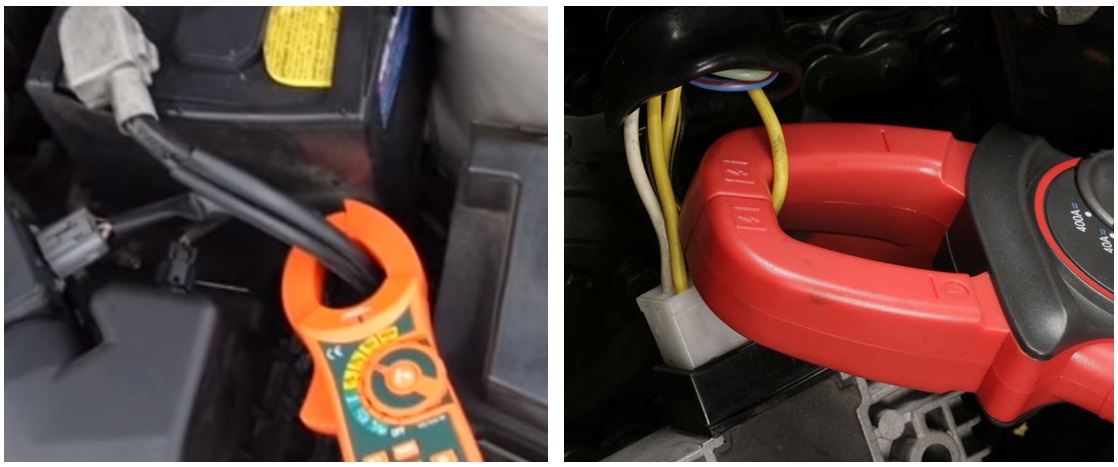
In many cases, however, measuring the voltage drop across fuses may also be a suitable method.
Ohm’s law states that if current flows through a resistor, a voltage drop occurs across this resistor (U = I x R).
It follows that the magnitude of the current in a circuit can be determined indirectly by measuring the voltage drop across a suitable resistor in series with this circuit.
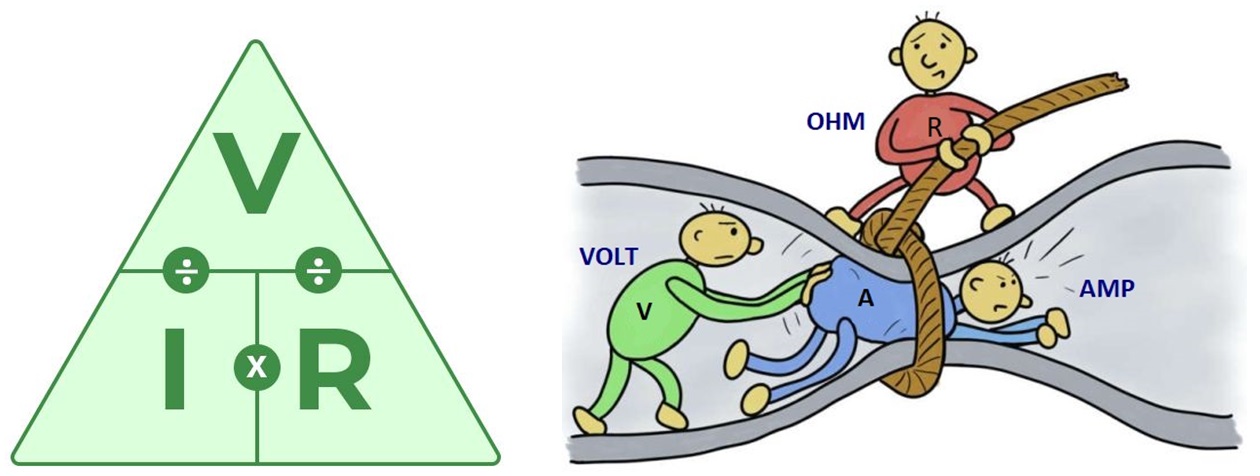
This method – determining the magnitude of the current by measuring the voltage – is well-known and is also used in car electrical diagnostics.
A typical example of its use is determining the current flowing through a car fuse. Each fuse has a certain, albeit very small, resistance (of the order of milliOhms). When current flows through the fuse, a small but measurable voltage drop occurs across it (of the order of milliVolts).
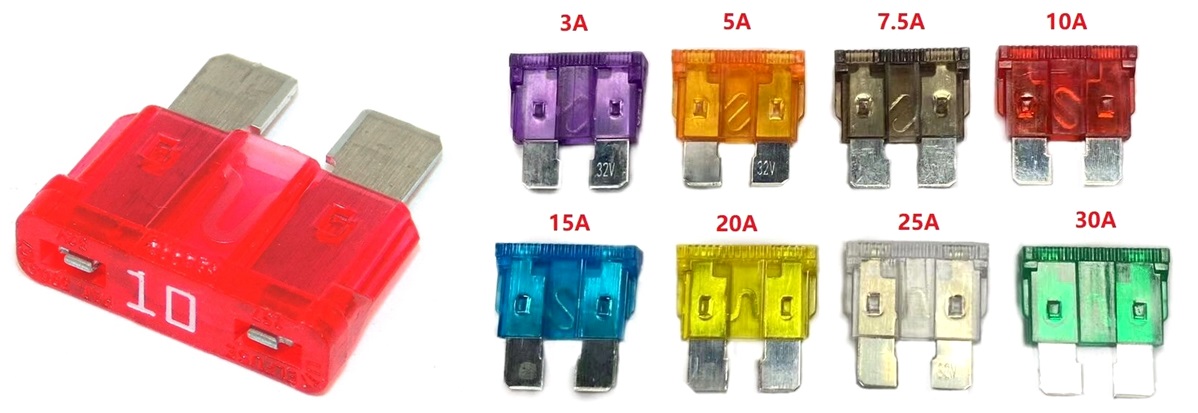
| The table below shows the relationship between the current through a fuse and the voltage across the fuse. Based on the type of fuse and the measured voltage, the amount of current flowing can then be determined with relative accuracy. This allows, for example, the identification of a circuit or branch through which an unwanted current is flowing, without the need to remove individual fuses. |
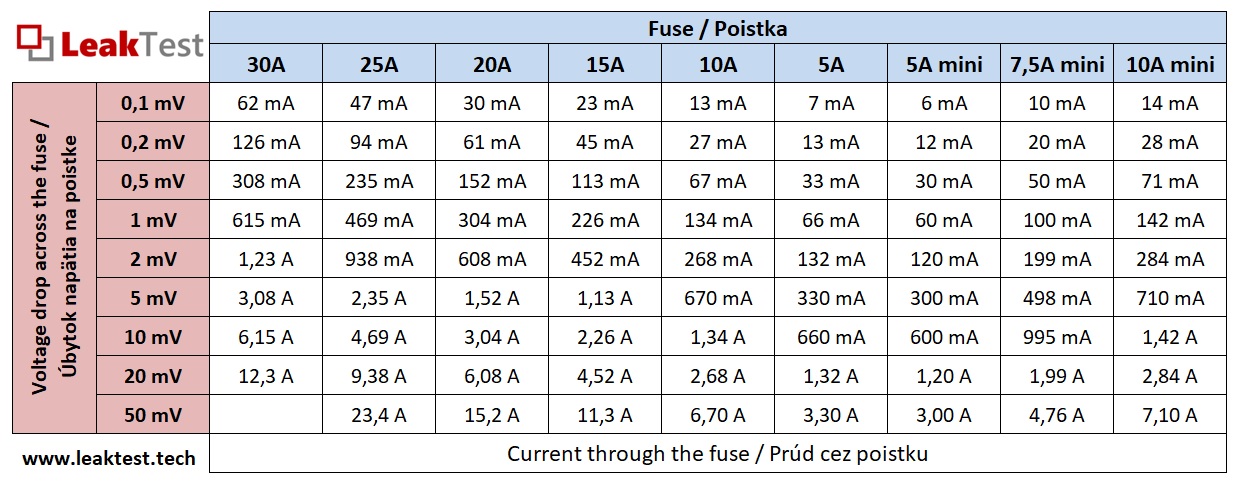
| Example: A voltage of 5mV was measured on a 10A fuse. The table shows that the current through the fuse is 670mA. |
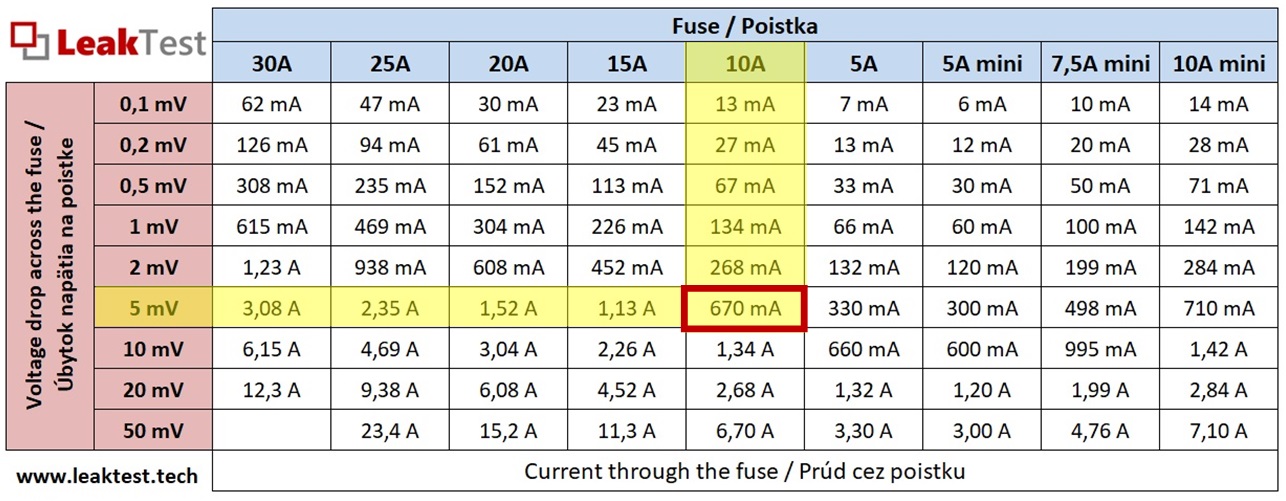
The measurement is made using a digital multimeter switched to measure the DC voltage (mV range) on the individual fuses in the fuse box. The fuses are not removed during the measurement. The fuse has measuring points connected to its contacts accessible from above. The measuring tips of the multimeter are placed on these points.
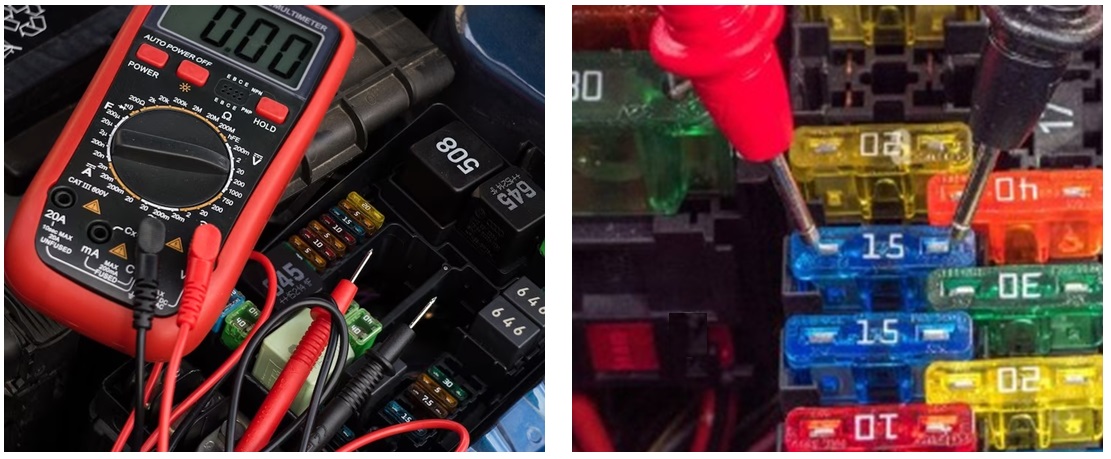
| Measurement procedure: 1. Select DC voltage measurement on the multimeter 2. Place the measuring tips on the measuring points on the fuse 3. The voltage drop across the fuse will appear on the display 4. Find the current corresponding to the measured voltage in the table. |
| What multimeter is suitable for this measurement? To achieve reasonable accuracy, the multimeter needs to have a resolution of at least 10uV on the DC voltage measurement range. Some cheaper multimeters do not achieve this parameter. |
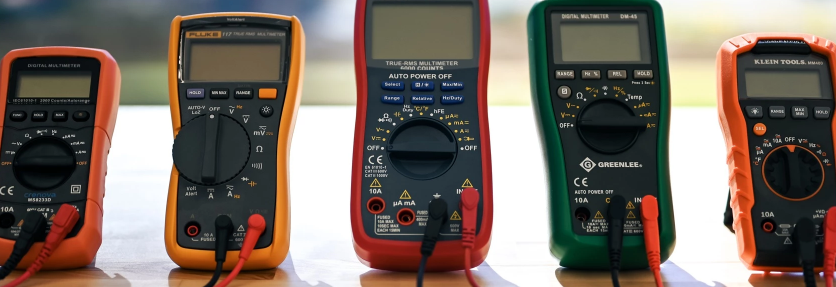
(The above image of the multimeters is for illustrative purposes only)
Before purchasing a multimeter, check the datasheet or instruction manual to make sure it meets the required parameters.
* * * * * * * * * * * * * *
The LeakTest LT-10 discharge current recorder works on the same principle. It does not measure the voltage at the fuses, but at the ground cable that goes from the negative pole of the car battery to the vehicle chassis. The measurement result is then the total current leaking from the car battery.
| Whatever method you use to measure current, we wish you good luck in troubleshooting! If you have any questions, please contact us at info@leaktest.tech |